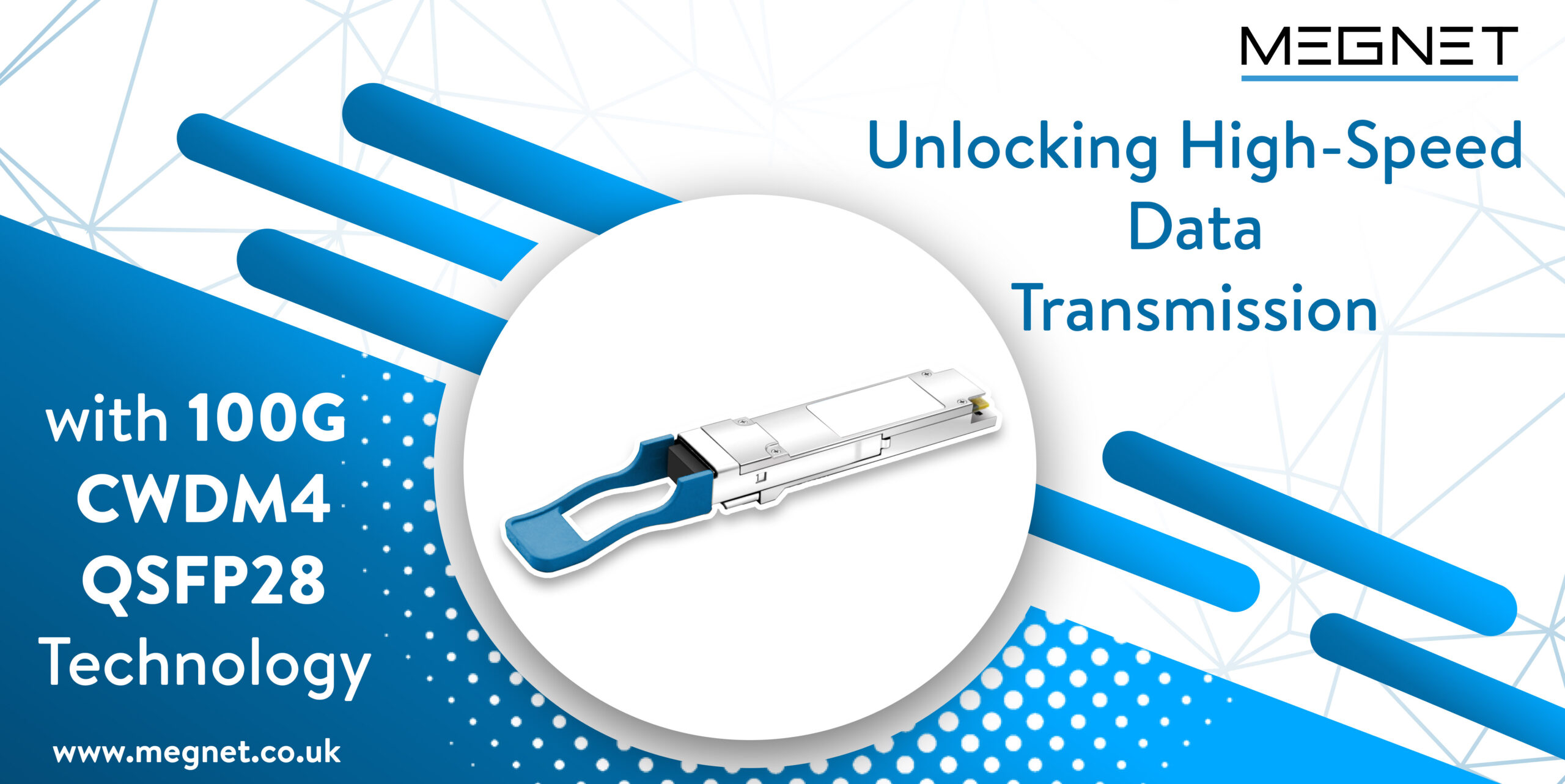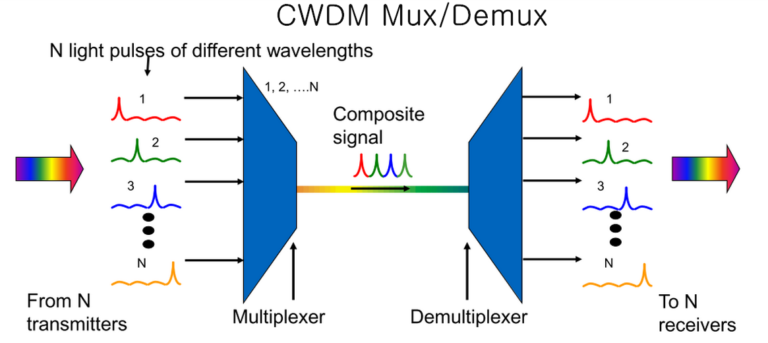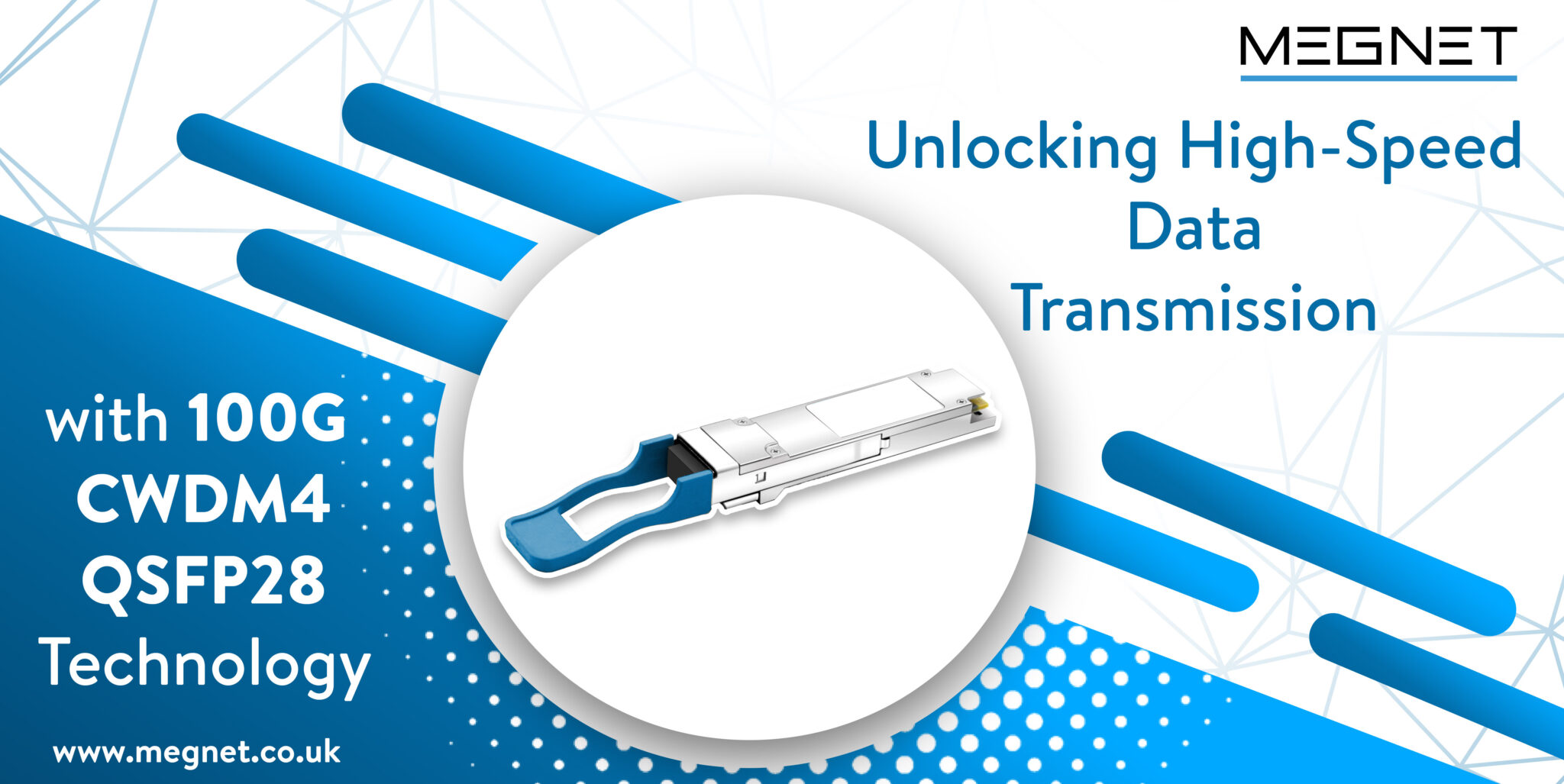
In today’s fast-paced digital landscape, you can’t deny the importance of speedy data transmission. We all know how much we depend on data-driven apps and services these days, right? Well, that’s why we need networks that can transfer data quickly and efficiently. High-speed data transmission is like the superhero of our connected lives – it’s what makes streaming HD movies a breeze, keeps our cloud services running smoothly, allows us to chat in real-time, and even makes remote work possible.
An Overview of Why Rapid Data Transfer Is Crucial
Every business and network provider wants not less than higher data transfer rates. Networks with the capacity to process enormous volumes of data quickly and reliably are essential for today’s businesses, institutions, and consumers due to increasing fast-paced requirements. The demand for rapid data transfer is universal, whether you’re a content provider trying to create frictionless user experiences or a business trying to optimise network product operations through data analytics.
What will help you stay ahead of the ever-increasing data demand? The answer is right next.
100G CWDM4 QSFP28 Technology
This cutting-edge technology provides a strong answer to the high-speed data transfer requirement. But what is it exactly?
The abbreviation for 100G CWDM4 QSFP28 is 100 Gigabit Coarse Wavelength Division Multiplexing Quad Small Form-Factor Pluggable 28. While the term is a mouthful, it symbolises a significant leap in data transmission technology. This little, inconspicuous gadget packs a powerful punch, allowing data transfer at 100 gigabits per second (Gbps) while utilising Coarse Wavelength Division Multiplexing (CWDM) for efficiency.
Understanding the Benefits and Applications
Now that we’ve covered CWDM4 QSFP28 for 100G, let’s get into the main point of this blog: to thoroughly examine the advantages and uses of this ground-breaking technology.
Understanding the potential of 100G CWDM4 QSFP28 will empower organisations and individuals alike in this digital era. You will understand how this technology can revolutionise data transmission, making it quicker, more dependable, and more adaptable than ever before by the conclusion of this blog.
In the following sections, we’ll discuss the specifics of 100G CWDM4 QSFP28, including its benefits, potential applications, and implementation issues in data transmission. This blog aims to inform readers on how this technology can revolutionise our online connections and communications, whether you’re an IT specialist looking to improve your network’s performance or an inquisitive tech enthusiast.
What is 100G CWDM4 QSFP28?
Let’s analyse the acronym and language that describe 100G CWDM4 QSFP28 technology in high-speed data transmission.
100 gigabit or 100 G: This denotes the data rate, which is astoundingly high at 100 gigabits per second (Gbps). In other words, it can send 100 billion bits of data every second.
CWDM4 is a four-channel coarse wavelength division multiplexing system. Multiple data streams can be delivered over a single optical cable utilising distinct wavelengths of light for each stream in CWDM. The “4” indicates that four unique channels or wavelengths are used.
QSFP28 is an abbreviation for Quad Small Form-Factor Pluggable 28, which describes the physical form factor and interface type. Because QSFP28 modules are small and hot-swappable, they are ideal for high-density network deployments.
100G CWDM4 QSFP28 is a technique that uses four unique wavelengths of light to carry data at a blistering 100 Gbps, all while being encased in a tiny, standardised form factor.
Underlying Technology and Principles
To accomplish high-speed data transmission, 100G CWDM4 QSFP28 technology is based on the principles of wavelength division multiplexing (WDM). This is how it works:
Coarse Wavelength Division Multiplexing (CWDM): CWDM is a method of assigning various data streams to different wavelengths of light in the optical spectrum. In the case of CWDM4, four distinct wavelengths are employed to simultaneously transmit four distinct data channels.

CWDM Multiplexing & Demultiplexing
The Quad Small Form-Factor Pluggable (QSFP28) form factor is intended for high-speed data transfer. It has four transmission channels and four reception channels, which correspond to the four Coarse Wavelength Division Multiplexing wavelengths.
Optical Transceivers: Optical transceivers are built inside the QSFP28 module and transform electrical data signals into optical signals and vice versa. These transceivers are highly designed to operate at the Coarse Wavelength Division Multiplexing wavelengths.
Multiplexing and demultiplexing devices guarantee that the four wavelengths are mixed for transmission and separated for reception at both ends of the transmission.
Data is transferred through ordinary single-mode optical fibres, which are capable of transmitting high-speed communications across great distances with low signal loss.
Benefits of 100G CWDM4 QSFP28
100G CWDM4 QSFP28 technology provides a number of major benefits for data transfer and networking requirements. Here are five major advantages:
- High-Speed Data Transmission: One of the most notable benefits of the Coarse Wavelength Division Multiplexing QSFP28 is its capacity to transport data at a staggering rate of 100 gigabits per second (Gbps). This high-speed capacity is critical for fulfilling the growing needs of data-intensive applications like video streaming, cloud computing, and big data analytics.
- Efficiency Through Wavelength Multiplexing: CWDM4 takes advantage of Coarse Wavelength Division Multiplexing (CWDM) technology, allowing for the simultaneous transmission of several data channels over a single optical fibre. Not only does this improve bandwidth consumption, but it also minimises the complexity and cost of constructing more fibre optic infrastructure.
- Scalability at a Low Cost: Coarse Wavelength Division Multiplexing QSFP28 technology offers a low-cost option for network scalability. With the ability to transmit four separate data channels, it provides a clear route for capacity increase without requiring major infrastructure changes. This scalability is especially beneficial for data centres and telecommunications companies wishing to expand in the future.
- Space and Power Efficiency: QSFP28 modules are small and energy-efficient, making them ideal for dense network applications such as data centres. Because of their tiny form factor, they take up less physical space and consume less power than larger, less efficient alternatives, resulting in lower operational expenses in Coarse Wavelength Division Multiplexing.
- Compatibility and Interoperability: 100G CWDM4 QSFP28 modules are compliant with industry standards, ensuring compatibility and interoperability with a wide range of networking devices and infrastructure. Because of this compatibility, it is easier to integrate into existing networks, making it a viable option for enterprises wishing to expand their data transmission capabilities.
Applications and Use Cases of 100G CWDM4 QSFP28
100G CWDM4 QSFP28 technology finds a wide range of applications across various industries due to its high-speed data transmission capabilities and efficiency. Here are six key applications and use cases:
- Data Centres: High-Density Servers: Data centres benefit from Coarse Wavelength Division Multiplexing QSFP28 for linking high-density server racks, allowing for faster data interchange and maximum performance in resource-intensive applications.
- Telecommunications: Telecommunications companies use Coarse Wavelength Division Multiplexing QSFP28 modules to improve their network infrastructure, allowing them to provide clients with quicker and more dependable services such as high-definition video streaming and low-latency gaming.
- HPC (High-Performance Computing): HPC clusters use this technology to speed scientific simulations, weather forecasting, and other data-intensive research, allowing for quicker data transport and calculation.
- Cloud Computing: Cloud Services: To provide a flawless and responsive experience for cloud-based apps, cloud service providers deploy 100G CWDM4 QSFP28 for robust and efficient data transfer between data centres and end-users.
- Services in the Financial Sector: High-Frequency Trading: In the financial world, microseconds may mean a lot. The Coarse Wavelength Division Multiplexing QSFP28 technology provides ultrafast data transfer in high-frequency trading systems where split-second choices are critical.
- Telemedicine and healthcare: Medical Imaging: Medical institutions use high-speed data transfer to share huge medical imaging files and conduct real-time telemedicine consultations, which improves patient care and shortens diagnostic time. While 100 gigabit CWDM4 QSFP28 technology is a tremendous achievement, it is not without obstacles and future growth potential.
Challenges
Implementing 100G CWDM4 QSFP28 technology might be prohibitive for certain businesses due to the initial investment required. Early adopters may have financial restrictions, although the costs of new technologies often drop with time.
Organisations with outdated network infrastructures may require significant changes in order to properly take use of this technology. This may be annoying and expensive.
Signal deterioration and optical interference become more of a concern with higher data speeds. Tackling these difficulties calls for meticulous preparation and optimization.
Future Developments
- Higher Data Rates: Due to the rising needs of developing applications such as augmented reality (AR) and virtual reality (VR), future research may focus on obtaining even higher data rates exceeding 100Gbps.
- Improved Power Efficiency: Ongoing research and development efforts will most likely result in more energy-efficient 100G CWDM4 QSFP28 modules, decreasing data transmission’s environmental imprint.
- Interoperability and standards: The industry will continue to work on standardisation and interoperability to ensure that 100G CWDM4 QSFP28 remains a flexible and widely accepted technology.
- Integration with upcoming Technologies: Integrating with upcoming technologies like 5G and edge computing will be a priority, allowing for seamless connection in an increasingly scattered and linked society.
Conclusion
We’ve been on an exploration to grasp the revolutionary impact of 100G CWDM4 QSFP28 technology throughout this blog. We started by identifying the ever-increasing demand for high-speed data transfer in our data-driven world and introducing the technology. We investigated its inner workings, advantages, and potential applications in industries ranging from data centres to healthcare.
This innovative 100G CWDM4 QSFP28 technology offers unrivalled benefits:
- Speed: The blazing 100 Gbps data transfer speed sets a new bar for data connectivity efficiency and responsiveness.
- Efficiency: It optimises bandwidth utilisation by using Coarse Wavelength Division Multiplexing (CWDM), making it both cost-effective and ecologically friendly.
- Scalability: With the capacity to transmit four independent data channels, it provides a scalable option for enterprises seeking to handle future expansion without incurring costly infrastructure upgrades.
Its small form size and energy-efficient architecture make it perfect for data centres and other high-density situations, lowering operational expenses.
Industry standards assure compatibility and interoperability with current networking equipment, making integration easier.
Finally, we must underline the importance of enterprises considering 100G CWDM4 QSFP28 technology as a driver for enhanced connection. The digital world is rapidly developing, necessitating quicker, more efficient data transfer options.
Organisations that use this technology can:
- Maintain Competitiveness: Speed and efficiency are competitive advantages in a hyperconnected society. Adopting 100G CWDM4 QSFP28 technology can assist firms in staying ahead of the competition.
- Improve the User Experience: Faster and more dependable connectivity leads to better user experiences, increased customer happiness, and enhanced service delivery, whether you’re a cloud service provider, a healthcare institution, or a financial organisation.
- Allow for Innovation: From AI-driven apps to real-time collaboration tools, high-speed data transfer is the cornerstone of innovation in a variety of industries. This technology opens up new opportunities.
- Scalability and compatibility guarantee that your network infrastructure stays adaptive and future-ready, saving you money on costly upgrades in the future.The 100G CWDM4 QSFP28 technology provides a quantum leap forward in data transmission capability. It enables enterprises to succeed in the data-centric age by delivering the speed, efficiency, and scalability required to excel in today’s competitive environment. The question is not whether or not to implement this technology, but when – and the answer is now. With 100G CWDM4 QSFP28 technology, you can embrace the future of connection and unleash the full potential of your network. It is critical to the success and competitiveness of your organisation.
FAQ's
QSFP28 is an abbreviation for Quad Small Form-Factor Pluggable 28. It is a small, hot-swappable transceiver module used in networking for high-speed data transfer.
High-speed data transmission (100Gbps), efficiency through wavelength multiplexing, cost-effective scaling, space and power efficiency, and compatibility with existing infrastructure are the primary benefits.
By employing distinct wavelengths of light for each stream, 100G CWDM allows several data streams to use a single optical cable. For optimal data transmission, CWDM4 QSFP28 utilises four different wavelengths.
Although it is conceivable, older infrastructures may require major improvements to effectively support this technology, including appropriate optical fibre types.
Data centres, telecommunications, high-performance computing (HPC), cloud computing, financial services, and healthcare are among the industries that use 100G CWDM4 QSFP28 technology for a variety of applications.
It enables rapid and dependable data transfer between data centres and end users, allowing for seamless access to cloud-based applications and services.
It is, indeed. QSFP28 modules are space and power efficient, making them ideal for high-density situations like data centres.
Absolutely. Because of its high speed and low latency, 100G CWDM4 QSFP28 technology is suited for real-time applications, which improves user experiences.
Yes, continuous R&D efforts seek to reach even greater data rates in order to fulfil the demands of developing applications.
While it is not a direct security solution, its high-speed data transfer allows for faster reaction times for security protocols and improves network monitoring capabilities, which can help in discovering and mitigating security risks.









Leave a comment
Your email address will not be published. Required fields are marked *